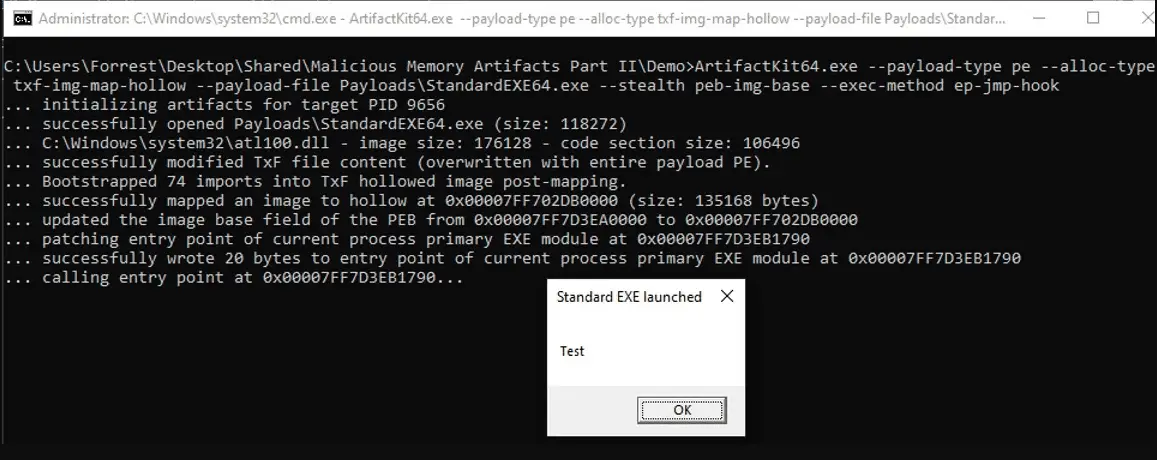artifacts kit: Pseudo-malicious usermode memory artifact generator kit

artifacts kit
Pseudo-malicious usermode memory artifact generator kit designed to easily mimic the footprints left by real malware on an infected Windows OS.
The artifact kit allows the user to specify an execution method. This is the method by which execution control is passed to the payload after its container region has been created, its implant is finished and its obfuscations are finalized. This may be either:
-
A new thread by use of the KERNEL32.DLL!CreateThread API
-
A JMP hook placed on the entry point of the primary EXE module (which is called by the artifact kit to simulate the type of hook often used in process hollowing)
-
A direct assembly CALL instruction. This distinction of execution method has great significance, as the starting point of a thread and modification of existing image memory are some of the many artifacts a scanner may leverage to form an IOC, as we will explore later.
An example of the practical usage of the artifact kit is as follows: we would like to mimic the memory artifacts generated by the loader of the Orisis malware family. I suggest reading this analysis of the Osiris loader prior to reading the remainder of this section. This loader begins by using the Lagos Island method in order to bypass hooks on ntdll.dll. We can artificially generate an identical artifact using the artifact kit:




